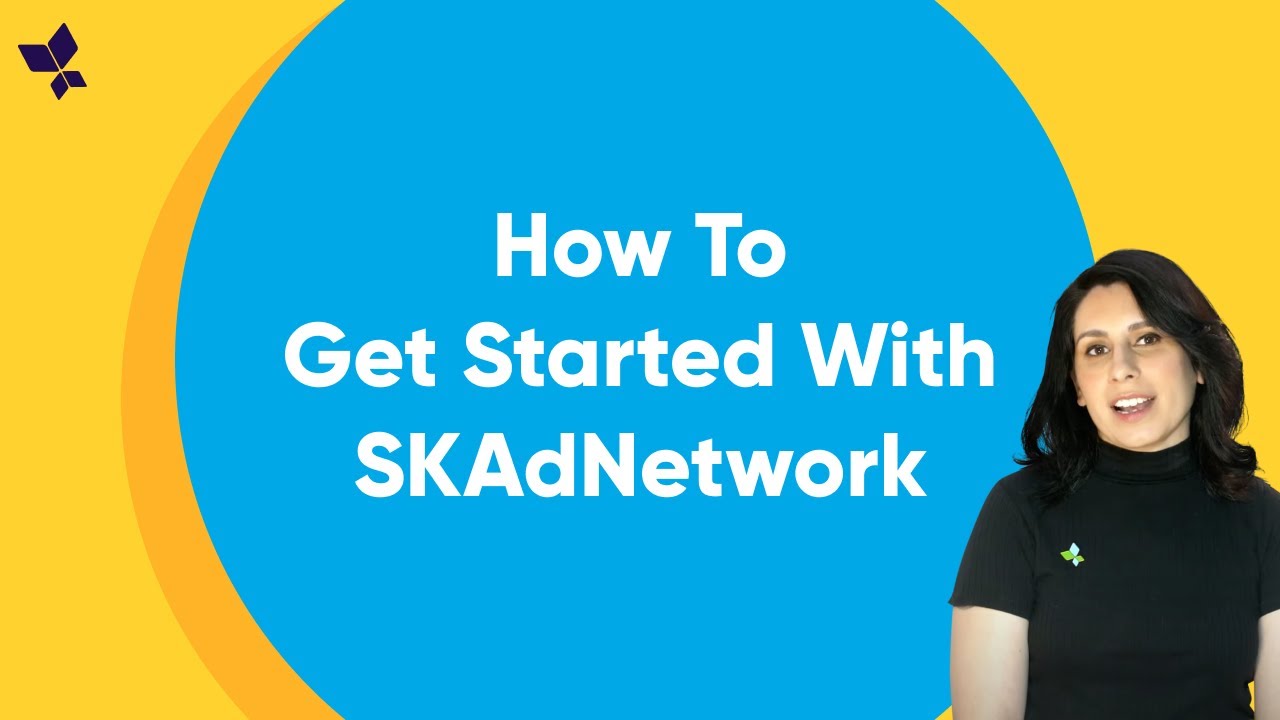In our increasingly digital world, the power of advertising cannot be understated. Adcampaigns fuel the growth of businesses, driving them towards success.
But how can we measure the effectiveness of these campaigns? Enter SKAdNetwork, a game-changing innovation by Apple.
This revolutionary tool allows us to accurately attribute the success of mobile ad campaigns. But beware, this isn’t your ordinary attribution model.
SKAdNetwork requires collaboration from ad networks, publishing apps, and advertised apps to make the magic happen. And as with any innovation, there are limitations to be aware of.
However, fear not, because attribution providers are already hard at work finding solutions. Hang on tight as we delve deeper into the world of SKAdNetwork and unravel its mystery.
Table of Contents
- sk ad network
- 1. Introduction To Skadnetwork: Apple’s Framework For Mobile Ad Campaign Attribution
- 2. Collaboration Between Ad Network, Publishing App, And Advertised App In Skadnetwork
- 3. Distinction Between Skadnetwork And Apple’s Idfa
- 4. The Importance Of Skadnetwork In Light Of iOS 14 Policy Changes
- 5. Requirements For Ad Networks To Use Skadnetwork
- 6. Role Of Publisher Apps In Skadnetwork Attribution
- 7. Limitations Of Skadnetwork And Potential Challenges
- 8. Solutions And Future Integration Of Skadnetwork By Attribution Providers
sk ad network
SKAdNetwork is a framework introduced by Apple for measuring mobile ad campaign attribution for iOS apps. It is a separate system from Apple’s device identifier for advertisers (IDFA) and has become more important for advertisers due to Apple’s policy changes in iOS 14 limiting access to IDFA.
Ad networks must register with Apple, sign ads appropriately, and integrate with the platform to use SKAdNetwork. Publisher apps need to indicate ad clicks, and advertised apps need to indicate when they are opened and grade user quality.
However, SKAdNetwork has limitations such as limited data granularity, delayed data, and no support for re-engagement attribution. Attribution providers are working on solutions to address these challenges and provide centralized, validated SKAdNetwork data.
Integration and event-to-conversion configuration are important features for these solutions, and it is likely that SKAdNetwork will be incorporated into aggregated attribution solutions by attribution providers.
Key Points:
- SKAdNetwork is a framework introduced by Apple for measuring mobile ad campaign attribution for iOS apps.
- It is separate from Apple’s device identifier for advertisers (IDFA) and has become important due to Apple’s policy changes in iOS 14.
- Ad networks need to register with Apple, sign ads appropriately, and integrate with the platform to use SKAdNetwork.
- Publisher apps must indicate ad clicks, and advertised apps must indicate when they are opened and grade user quality.
- SKAdNetwork has limitations, including limited data granularity, delayed data, and no support for re-engagement attribution.
- Attribution providers are working on solutions to address these challenges and provide centralized, validated SKAdNetwork data.
Sources
https://developer.apple.com/documentation/storekit/skadnetwork
https://www.admonsters.com/what-is-skadnetwork/
https://businesshelp.snapchat.com/s/article/skadnetwork?language=en_US
https://www.singular.net/blog/what-is-skadnetwork/
Check this out:
💡 Pro Tips:
1. Familiarize yourself with the requirements and guidelines set by Apple before integrating SKAdNetwork into your mobile ad campaigns. This will help ensure that you adhere to all necessary regulations and avoid any potential issues.
2. Keep in mind that SKAdNetwork provides limited data granularity compared to traditional attribution methods. To overcome this limitation, consider leveraging additional analytics tools and data sources to gain deeper insights into the performance and effectiveness of your ad campaigns.
3. Understand that SKAdNetwork introduces a delay in data reporting, as it relies on aggregated data that is sent to Apple and then distributed to ad network partners. Adjust your expectations and strategies accordingly to account for this delay in obtaining campaign insights.
4. Although SKAdNetwork currently does not support re-engagement attribution, you can still work around this limitation by implementing alternative strategies. For instance, you can leverage push notifications, email marketing, or other forms of direct communication with your existing users to encourage engagement and conversions.
5. Stay updated with the latest developments and improvements in the SKAdNetwork ecosystem. As the industry adapts to these new attribution methods, new solutions and best practices will emerge. Stay proactive in learning and implementing these advancements to maximize the effectiveness of your mobile ad campaigns.
1. Introduction To Skadnetwork: Apple’s Framework For Mobile Ad Campaign Attribution
The SKAdNetwork framework, introduced by Apple, offers a sophisticated solution for measuring mobile ad campaign attribution for iOS apps.
With this framework, the ad network, publishing app, and advertised app work together seamlessly to provide accurate attribution data. SKAdNetwork is a valuable tool for advertisers, enabling them to understand the effectiveness of their ad campaigns and make informed decisions based on reliable data.
In the world of mobile advertising, attribution refers to the process of determining which marketing efforts contributed to a specific user action, such as downloading an app or making a purchase. Traditionally, attribution relied heavily on Apple’s device identifier for advertisers (IDFA) to track user activity.
However, iOS 14 policy changes have restricted access to IDFA, making SKAdNetwork even more essential for advertisers seeking accurate attribution insights.
2. Collaboration Between Ad Network, Publishing App, And Advertised App In Skadnetwork
SKAdNetwork operates on a collaborative model involving three key players: the ad network, the publishing app, and the advertised app.
These entities work in tandem to ensure accurate attribution and measurement of mobile ad campaigns.
- The ad network, as the middleman, must register with Apple and adhere to specific guidelines to be able to utilize SKAdNetwork’s capabilities. They are responsible for signing the ads with cryptographic signatures, which protect the integrity of the attribution data.
- The publishing app plays a crucial role in indicating ad clicks to the operating system.This information helps track the interactions users have with ads.
- The advertised app, on the other hand, is responsible for indicating when it is opened and grading the quality of users, allowing for deeper analysis of campaign effectiveness.
By combining the efforts of these three entities, SKAdNetwork ensures that attribution data is accurate and reliable, enabling advertisers to optimize their campaigns and drive better conversions.
3. Distinction Between Skadnetwork And Apple’s Idfa
It’s important to note that SKAdNetwork is distinct from Apple’s Identifier for Advertisers (IDFA).
IDFA is a unique identifier assigned to each Apple device, allowing advertisers to track user behavior across different apps and websites. However, with iOS 14, Apple implemented privacy changes that require users to opt-in to share their IDFA.
SKAdNetwork, on the other hand, provides an alternative framework for attribution measurement that does not rely on IDFA. This framework enables advertisers to continue measuring the impact of their ad campaigns, even without access to individual user data.
4. The Importance Of Skadnetwork In Light Of iOS 14 Policy Changes
With the introduction of iOS 14, Apple’s policy changes have significantly impacted advertisers and their ability to access IDFA for attribution.
This shift has placed a greater emphasis on SKAdNetwork as a vital tool for measuring the effectiveness of mobile ad campaigns on iOS devices.
By leveraging SKAdNetwork, advertisers can continue to track and attribute conversions, albeit with some limitations. SKAdNetwork ensures that attribution remains possible within the boundaries set by Apple’s privacy policies.
Advertisers must adapt their strategies to rely more on aggregated and anonymized data provided by SKAdNetwork rather than individual user tracking.
5. Requirements For Ad Networks To Use Skadnetwork
To utilize the capabilities of SKAdNetwork, ad networks are required to fulfill certain requirements and follow specific guidelines set by Apple.
These requirements include:
- Registering with Apple: Ad networks must go through a registration process with Apple to gain access to SKAdNetwork.
- Appropriate Ad Signing: Ad networks are responsible for signing their ads with cryptographic signatures. This process ensures the integrity of the attribution data and prevents tampering.
- Integration with the Platform: Ad networks must integrate SKAdNetwork into their existing infrastructure to effectively measure and attribute conversions.
By meeting these requirements, ad networks can leverage SKAdNetwork to provide accurate attribution insights to advertisers and help them make data-driven decisions.
6. Role Of Publisher Apps In Skadnetwork Attribution
Publisher apps, also known as installed app networks, play a crucial role in the attribution process within SKAdNetwork.
These apps are responsible for indicating ad clicks to the operating system, providing valuable information on user interactions with ads.
When a user interacts with an ad within a publisher app, SKAdNetwork captures this event and attributes it to the respective ad network. This attribution data is essential for advertisers to understand the impact of their campaigns and optimize their strategies accordingly.
7. Limitations Of Skadnetwork And Potential Challenges
While SKAdNetwork offers powerful attribution capabilities, it does have some limitations and potential challenges that advertisers and attribution providers must consider:
- Limited Data Granularity: SKAdNetwork operates on aggregated data, providing limited granularity compared to traditional tracking methods.
- Delayed Data: Due to privacy restrictions and processing requirements, SKAdNetwork data is subject to delays, making real-time optimization challenging for advertisers.
- No Support for Re-engagement Attribution: SKAdNetwork primarily focuses on measuring the effectiveness of user acquisition campaigns and does not support re-engagement attribution, which may pose challenges for advertisers with re-engagement strategies.
It is essential for advertisers and attribution providers to be aware of these limitations and develop strategies to overcome them and obtain the most accurate and actionable insights from SKAdNetwork data.
8. Solutions And Future Integration Of Skadnetwork By Attribution Providers
Attribution providers are working diligently to address the limitations of SKAdNetwork and provide solutions that enhance its functionality.
Despite the challenges posed by limited data granularity and delayed data, these providers aim to offer centralized and validated SKAdNetwork data to advertisers.
Integration and event-to-conversion configuration are critical features that attribution providers are focusing on. By seamlessly integrating SKAdNetwork into their existing platforms and optimizing event tracking and conversion measurement, providers can help advertisers make the most of SKAdNetwork’s capabilities.
In the future, SKAdNetwork is likely to be incorporated into aggregated attribution solutions offered by attribution providers. This integration will enable advertisers to combine SKAdNetwork data with other attribution sources, providing a holistic view of their mobile ad campaigns and enhancing campaign optimization and decision-making processes.
In conclusion, SKAdNetwork has emerged as a powerful framework for measuring mobile ad campaign attribution on iOS apps. Its collaborative nature involving ad networks, publishing apps, and advertised apps ensures reliable attribution data.
While it has limitations, solutions are being developed by attribution providers to address these challenges. SKAdNetwork’s importance continues to grow following Apple’s policy changes in iOS 14, making it a critical tool for advertisers seeking accurate attribution insights to drive conversions.












